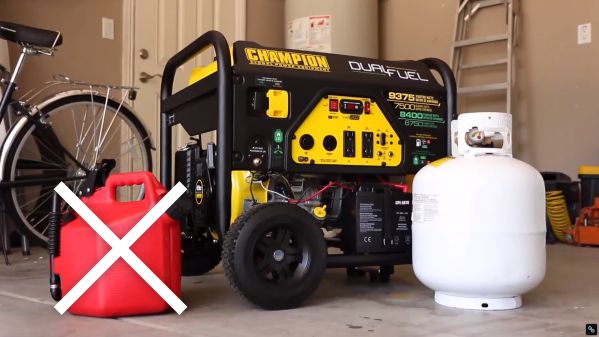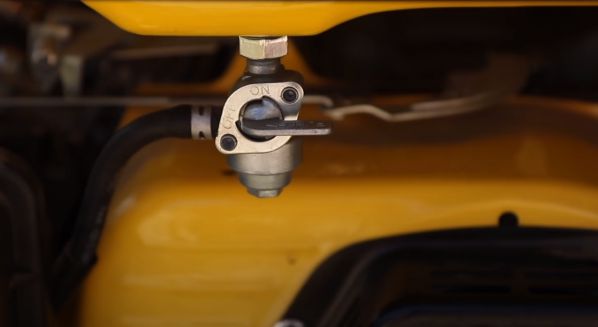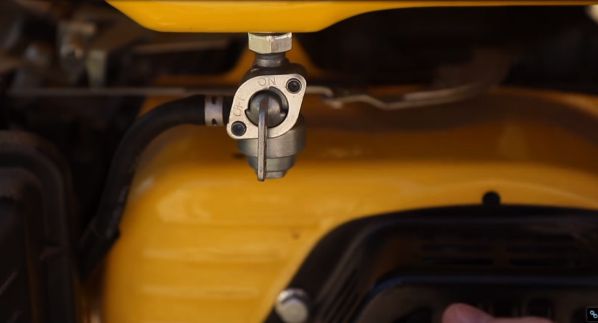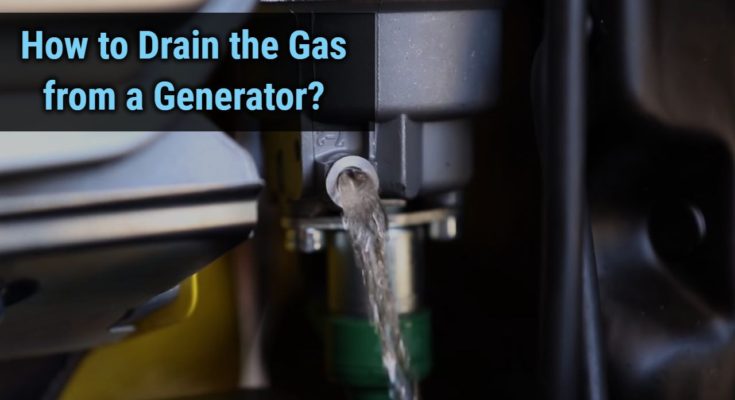Well, a generator is an important home appliance that provides electricity when the power grid fails; you will see them at most offices and homes. But what if the generator doesn’t start when you need it the most, suppose during a natural disaster.
If you want to avoid getting stuck in such scenarios, then proper maintenance is crucial, and also draining the gasoline from the unit is quite important.
If you don’t regularly use your generator, then you should drain the gasoline before storing it. If you want to avoid the draining process, then you can add the stabilizer to it. If you don’t drain the generator, the fuel will gum up inside the carburetor and engine parts, creating starting and many other issues.
You can drain the generator by opening the drain. Some units might not have a gas drain. In that case, empty the fuel tank and run the generator so that the remaining fuel gets used up. It is a simple process.
This article will explain how to safely and easily drain the gasoline from the generator and the carburetor. Moreover, we will also give some tips on storing your generator safely and correctly.
Table of Contents
Why is it Important to Drain the Gas from a Generator?
A generator is an electromechanical device, so all the moving parts inside it need proper maintenance. If you want your generator to function with as few problems as possible, regular maintenance is very important.
Generator maintenance doesn’t only mean regular cleaning, but it also includes preventive measures as well. And draining the gas out of it is one such preventive measure to keep it in the best shape.

Because gasoline has a very short shelf life, it will start degrading due to oxidation and evaporation. Moreover, gasoline that will contain ethanol will have even less shelf life. So, if the gas is oxidized inside the engine and carburetor, it will create a range of problems.
It will clog the pipes and prevent the flow of air or fuel, so the generator will not be able to start. Oxidized gasoline will wear the engine and other parts of the system.
That’s why you should drain the gas before storing the generator to maintain a long lifetime and reliability.
For How Long Can You Keep Gasoline in a Generator?
It will depend on the quality of the gasoline. Clean gasoline, without ethanol, will have a shelf life of about three to six months. On the other hand, gasoline with ethanol has a reduced shelf life, and this gasoline will stay good for two to three months before it starts degrading.
So, if you have clean fuel, then you can store it for three to six months, whereas fuel with ethanol shouldn’t be inside the generator for more than two months.
Now, a stabilizer can increase the lifetime of the gasoline, so it won’t create any problems even if you keep it in the generator for a year. But we suggest that you should use up or replace the gasoline every six months.
You can store the gasoline in your generator for a recommended time period without any problems but when you do that, make sure to turn off the tank shut-off valve. If it stays open, then gasoline will seep into the carburetor. This will lead to clogged pipes, and you might face starting problems.
Steps to Drain the Gasoline from A Generator
You should be careful when draining a generator and do it properly. Below, we have discussed the steps to systematically drain the gasoline from a generator.
Step 1
Before you do anything, you should turn off the fuel valve, and this will prevent the fuel from going inside the system. This will conveniently be the position in which it can pass through the plastic cover covering the fuel lines when it needs to be removed in some generators. Otherwise, you will need to keep it in the open position until the cover is removed.

Once it is done, you should be ready with the container to collect the fuel, wrench, and pliers. You will need these tools to detach the tightly fitted fuel lines from their place.
Step 2
Now, you should let the airflow inside the tank. This can be done by removing the tank cap. Make sure that the generator is in a well-ventilated area before you open the cap.
Step 3
Now to access the fuel lines, you will need to remove the plastic covers. It shouldn’t be a difficult task. Few large bolts keep the cover in place, unscrew them, and the cover will come off. This is where you will need help from the wrenches.
Step 4
Now, if the fuel valve needs to be in an open position to take the cover off, then after removing the cover, turn it off. You will now see two fuel lines connected to the fuel valve with the help of clamps. One will go to the gas tank and another to the inside system.
Step 5
After that, you will need to remove the line that doesn’t go to the fuel tank; if you remove the other, then gasoline will flow everywhere. Use the pliers to loosen the clamps and remove the fuel line. Now, collect the gasoline from the pipe and let it drain inside the container.
Step 6
Now it is time to drain the gas tank, and you should place the open end of the valve inside a container and turn the valve to the open position.

The gasoline will start draining. You can use the gasoline in your car, so you don’t have to throw it away. Also, make sure that the container is big enough to accommodate all the fuel; otherwise, it will overflow.
Step 7
Once you notice that no more gasoline is coming out, it is time to place everything back together. Use the pliers to tighten the clamp and connect the pipeline to the fuel valve. Place back the cover and tighten the screws. Then, you should drain the carburetor.
Step 8
The carburetor will be fairly simple to find on the unit, and it will have a drain valve on it to drain the gasoline from it. So, place the container below the valve, use the screwdriver to loosen the drain valve. The gasoline should now start pouring into the container.
Step 9
Once the gas from the carburetor gets collected, tighten the drain valve.
Step 10
Now all the fuel from the generator is drained. You won’t have any gumming problems, so you can store the generator worry-free at a suitable place.
How to Safely Drain the Gasoline?
Gasoline is highly flammable; that’s why you must follow all the safety precautions before you perform the task.
When draining the generator, make sure that there is nothing around which can cause a spark. Things like cigarettes and lighters can lead to fires which can put you and the people around you at risk.
Moreover, as you know that you shouldn’t refuel the generator just after it has stopped. You will need to let it cool down, and only then you can refuel it. The same goes for draining as well.
Let the generator completely cool down and then only drain it. When you try to drain the fuel without letting it cool down, the components will be hot, which can burn your skin.
Also, this doesn’t need to be told but don’t perform the draining when the generator is running.
Why You Should Not Use Old Fuel in Your Generator?
When you have a tank full of gasoline in storage from last year, the question that comes to mind is should I use it or not? And the answer to that is not a simple one; it depends. It depends on the state of the fuel.
You see, when gasoline is stored for a longer period, then it goes under phase separation. And on top of that, if it has ethanol in it, then it will attract moisture from the atmosphere, which will sit at the bottom of the fuel. If you use this degraded fuel, then it will give rise to a range of problems. So, a phase-separated fuel is already a waste, and you shouldn’t use it.
If it hasn’t been phase-separated yet, then you can use it without any worries. The visual inspection of fuel will tell you if the fuel is good or not. If the gasoline is darkened and stratified, then it is spoiled. If you use that fuel, then it will form gums in the carburetor, damage internal engine parts, won’t burn efficiently, and will form deposits throughout the system.
When oxidized fuel is used, it might be possible that the generator may refuse to start. But if it starts, then the generator will overheat; this is because old fuel will increase the friction. The friction means more wear and tear and a reduced lifespan of the unit. The use of degraded fuel can even render the generator inefficient, which means it will start utilizing more fuel. So, increased operating cost.
That’s why you should avoid using old, degraded fuel.
How to Store the Generator Correctly?
You must store the generator properly and safely so that when you need it the next time, it will be ready to go.
Before storing the generator, you should check the oil levels, and it should be a few teaspoons inside the unit. If there is no leak in the generator, then oil use will be moderate. If you don’t know how to check the oil, then an owner’s manual will be helpful.
Another step is to empty the gasoline. That’s what we have discussed in detail, so don’t leave gasoline in the tank. Even if you let the gasoline stay in the tank and add a fuel stabilizer, then also it is a fire hazard, so we suggest avoiding that too and better keep the generator tank empty.
Before storing the generator, you should inspect for any damage to the components. If there are damaged or worn parts in the unit, then you should change them with new ones. You should inspect hoses, tanks, wheels, handles, spark arrestors, etc.
After that, you should clean all the dirt and debris from the exterior and switches, and dirt can degrade the switches and seals. A simple piece of cloth can do the trick, and you need to wipe down the whole generator.
Annual maintenance is of critical importance, even when your generator is stored. It will keep the generator in good condition and increase its lifespan.
So that was it. After that, your generator will be ready to use from its hibernation wherever and whenever you need to use it.
Conclusion
You can’t avoid the draining of a generator, and whether you are performing routine maintenance or want to store it for the season, you will have to take out the gasoline. So it is better to know how to do it properly. Because generators, if you don’t stay careful, can turn out to be dangerous machines. So, next time when you drain the generator, follow all the steps mentioned above. They are easy to perform.
Also, follow the safety precautions as we have discussed. Other than that, we also discussed the problems that the use of old oil will pose and the steps to store the generator correctly, hoping those will prove to be useful as well.
Related Articles:
2-Stroke Vs 4-Stroke Generators – Which One Do You Need?
Single Phase Vs Three-Phase Generators | All You Need to Know
How to Wire a Generator to a Breaker Box?
Best Propane Generators of 2024




